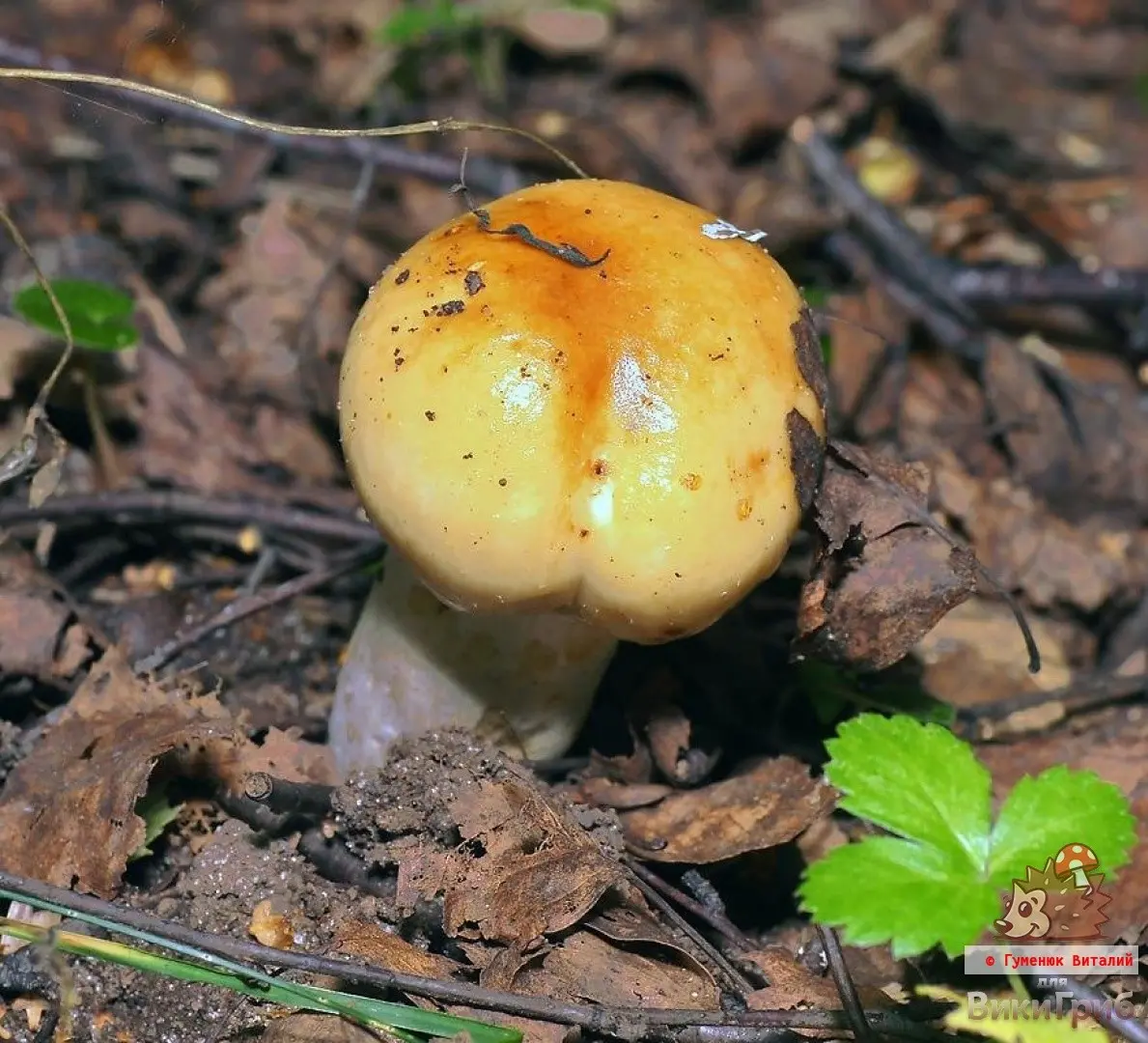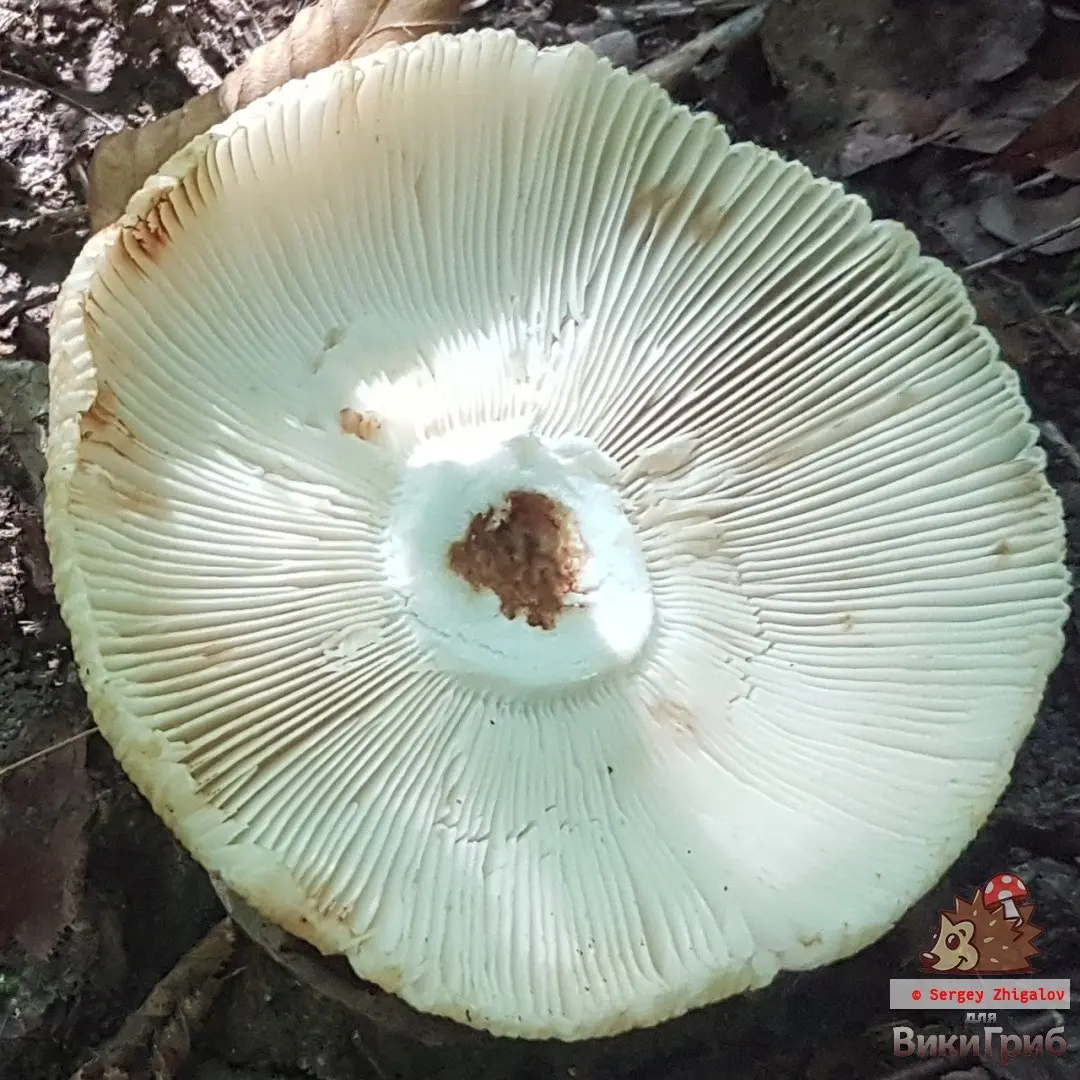Valui (Russula foetens)
- Division: Basidiomycota (Basidiomycetes)
- Subdivision: Agaricomycotina (Agaricomycetes)
- Class: Agaricomycetes (Agaricomycetes)
- Subclass: Incertae sedis (of uncertain position)
- Order: Russulales (Russulovye)
- Family: Russulaceae (Russula)
- Genus: Russula (Russula)
- Type: Russula foetens (Valui)
- Agaricus pepperatas Bull.
- Agaricus bulliardii JF Gmel.
- Agaricus fastidious Pers.
- Agaricus foetens (Pers.) Pers.
- Agaricus incrassatus Sowerby

Current name: Russula foetens Pers., Observationes mycologicae 1: 102 (1796)
Etymology: From the Latin foetens = fetid, due to a specific, often unpleasant smell. Italian name: Russula fetida
Slavic names reflect both the appearance and the “fortress” of the valuu:
- Goby
- Cam
- Kulbik
- Swinur
- Soplivik
head: large, massive, 5-17 cm in diameter, in good years it can easily grow up to 20 centimeters. In youth, spherical, fleshy-hard, then procumbent, shallow and widely depressed in the center, sometimes with a small wide tubercle.
The cap margin is often irregular, broadly wavy, sharp, with pronounced radial grooves that become more pronounced with age.

The color of the cap is light buffy, lighter along the edge and slightly more saturated in the center, in adult valuyas often with ugly asymmetrical spots of reddish-brown and even reddish-black.
The cap skin of young mushrooms is very sticky, slimy, slippery, as if it is covered with a gel lubricant, but in dry weather, the mucus dries out rather quickly. The peel is quite easily removed by about half the radius of the cap.
Young value, “Fist”:

Leg. Corresponds to the hat: massive, voluminous, up to 20 (or more) centimeters in height and 2-5 cm thick. Usually uniformly cylindrical or slightly widened at the top in front of the plates, may have a thickening at the bottom.
In very young specimens, the stem is whole, but very quickly the pulp in the middle of the stem becomes cottony and cavities form, caverns are formed, connecting into one large central cavity lined with a soft, dirty reddish-brown tissue.
The leg is quite dense and strong, but in age-related values it sharply gives in and sags when pressed quite strongly with fingers, it becomes fragile, especially in old age.
The color of the stem is white, but only in young mushrooms. The white surface of the stem becomes very quickly soiled with grayish, dirty brown, reddish brown, often in the form of large spots, but there may sometimes be a scattering of small spots and specks.
The surface of the stem is rough, less pronounced rough or cracked with age, covered with coarse powdery coating under the plates.
Pulp: thick, hard and tough, sharply thinned and gelatinized at the edges of the cap in young mushrooms. White on the cut and fracture, does not change color when damaged. But early becomes reddish-brown in the caverns of the stem and even in the inner region of the base of the stem. Juicy in young specimens, dryish, but not dry, in adults.
Smell: very strong and very unpleasant (nauseous, burnt according to Persoon) when cut. Sometimes described as the smell of rotten herring “on a fruity background”, sometimes as the smell of strongly rancid oil.
Taste: very sharp, pungent and bitter in the cap, but sometimes “almost mild” in the central region of the stalk.
Chemical reactions: KOH has little effect on the white parts of the flesh, including the skin of the leg (slight reddish or creamy straw at best), but makes the inner flesh of the leg reddish or reddish brown.
Records: sparse, thick, forked in places, brittle, lanceolate, sharp to rather sharp in front, for example, 8-14 mm wide. Narrowly grown. Almost no plates. First whitish, sometimes with droplets of clear liquid, then cream and with more or less pronounced brown spots, from dirty reddish brown, but the edge remains most often whole and uniform (or with a late darkening).

spore powder: white or creamy, pale cream, pale yellowish.
Споры 7,5-8,5-10,25-(11,5) x 6,7-8,7 µm, spherical or almost spherical, warty. The warts are distinctly rounded or conical, with several connecting ridges, easily reaching 1,5 x 0,75 µm.
It is common in slightly damp forests, on heavy soils, under deciduous and coniferous trees, both on the plains and in the mountains. Grows profusely throughout Europe, Asia and North America. It often bears fruit in large groups.
It begins to bear fruit from July, with a warm spring – even from June, until autumn.
A number of foreign sources unconditionally attribute Russula foetens to inedible and even poisonous species. So, for example, an Italian source: “In every sense it should be considered as a poisonous russula, although an unpleasant smell almost automatically repels.”
On the territory of the former USSR, valui is considered a completely edible mushroom, if you know how to cook it. Beyond the Urals, Valuev is harvested in huge barrels, mostly salted.
The main condition: the mushrooms must be thoroughly soaked, often changing the water. Pre-boiling (after soaking) is also necessary.

Basement (Russula subfoetens)
The closest species, practically indistinguishable from Valuy. The only clear macro difference: the reaction to KOH. Valui changes color to reddish, Podvalui – to yellow. All other features overlap. But this is not critical: both species are conditionally edible and after cooking they are completely indistinguishable.
For a large list of similar russula, see the article Podvaluy.
Video:
The article uses photos and videos of Sergey and Vitaly.









